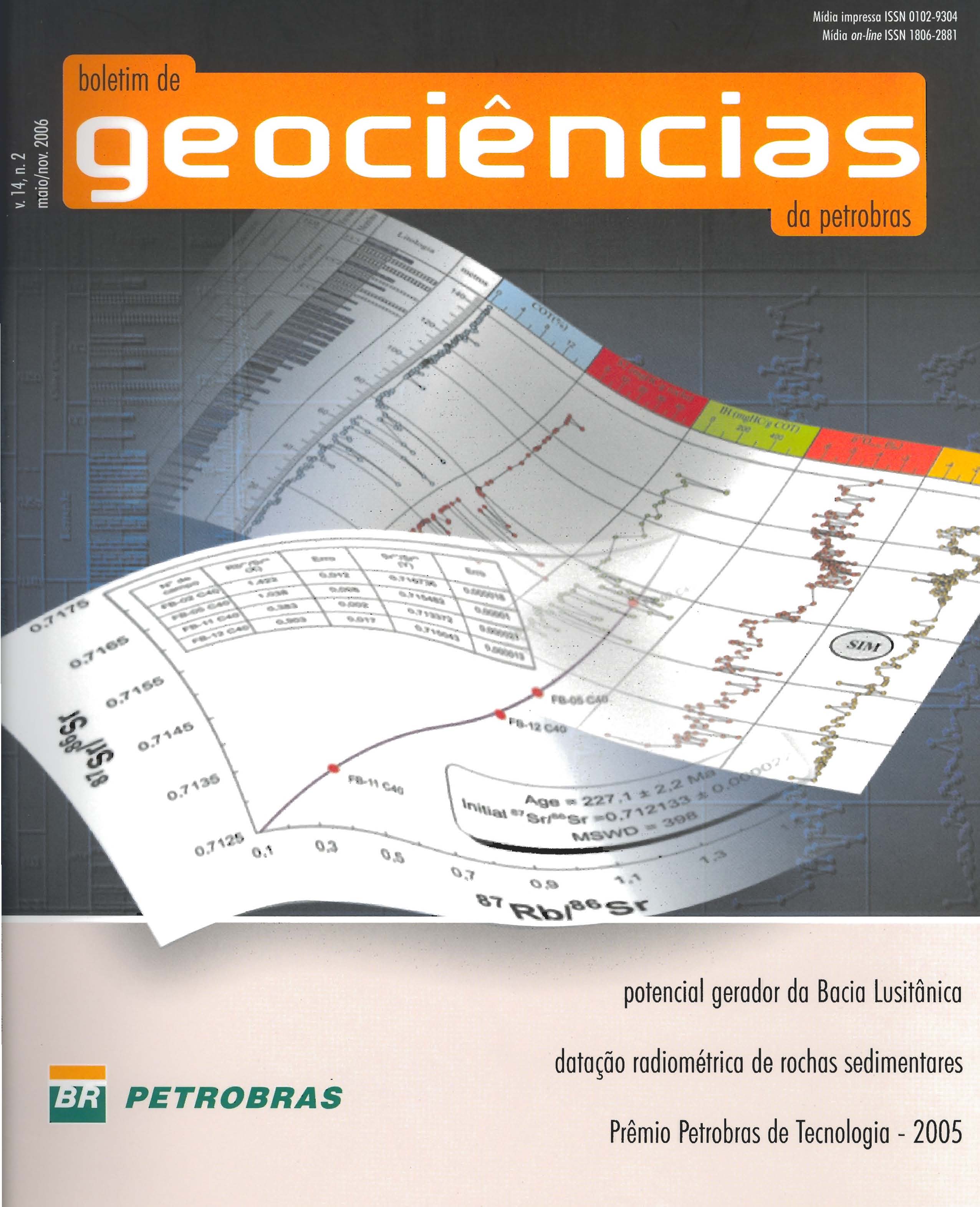Avaliação do potencial gerador de petróleo e interpretação paleoambiental com base em biomarcadores e isótopos estáveis de carbono da seção Pliensbaquiano – Toarciano inferior (Jurássico Inferior) da região de Peniche (Bacia Lusitânica, Portugal)
Keywords:
Lusitanian Basin, source rocks, source potential, Jurassic, carbon isotopesAbstract
The Lusitanian Basin (Portugal) is located on the western margin of the Iberian Plate with maximum sedimentary thickness around 5 km. In spite of con-taining promising petroleum systems and more than a hundred wells, its hydrocarbon generation potential has not been fully evaluated yet. These sediments range from upper Triassic to upper Cretaceous, main-ly from the Jurassic age. The Lower Jurassic is partic-ularly well represented in the Lusitanian Basin, specifically in the Peniche region, where there are more than 450 m thick outcrops of carbonate rocks aged between Sinemurian and Toarcian. This study pres-ents the evaluation of the hydrocarbon generation potential of the Pliensbachian – lower Toarcian of the Peniche section; which includes the Vale das Fontes Formation, Lemede Formation and Cabo Carvoeiro Formation (CC 1 and CC 2 members) based on 233 rock samples analyzed for total organic carbon (TOC), Rock-Eval pyrolysis and biomarkers. Available data of oxygen and carbon stable isotopes were also used in the paleoenvironmental interpretation. Marls and limestones with the bituminous facies (Mlbf) of the Vale das Fontes Formation, present the highest TOC values, up to 14.95%, corresponding to the ibex (upper part), davoei and margaritatus ammonites zones and part of the NJ4a and NJ4b nannofossils biozones (Pliensbachian). In thermically immature sec-tions (Tmax about 430ºC), this member also shows
high S2 values (10 to 50 mgHC/g rock) and Hydrogen index (HI: 200 to 555 mgHC/g TOC). The correlation between HI x OI shows that type II kerogen is predominant in the portion of the section where TOC values are higher. The good positive correlation between TOC values and the biomarkers ratio P/nC17 and steranes (C27/C29) throughout the Mlbf Member suggests a gradual increase of anoxia and higher contribution of algae in relation to terrestrial organic matter. Usually δ18O variations observed in the basins of the Iberian Peninsula have been explained by temperature changes. This work proposes an alternative interpretation, by correlating δ18O alterations with data on biomarkers to indicate salinity variations. Thus, the presence of gammacerane in the marls and limestones with Uptonia and Pentacrinus (Mlup) and lumpy marls and limestones (Lml), associated to the increase of δ18O values would indicate an environ-ment with salinity above normal levels. In addition to this, the increase of moretanes rates towards the maximum flooding (MF) interval - which is located in the δ13C positive excursion in the upper part of the Mlbf Member - margaritatus ammonites zone and NJ4b nannofossil biozone - associated with the absence of gammacerane, suggests gradual salinity reduction. The presence of gammaceranes at the uppermost part of the Mlbf Member, with the more-tanes rate reduction and the increase of Ts/Tm values seems to indicate a new cycle of increasing salinity.
Downloads
Published
Issue
Section
License
This license enables reusers to distribute, remix, adapt, and build upon the material in any medium or format, so long as attribution is given to the creator. The license allows for commercial use.




